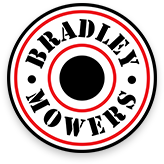The sun can scorch your yard in the hot summer months. Learn the trick to improving the amount of water your yard can absorb so it will thrive through the intense summer heat.
Water Your Grass in the Morning
Watering your lawn before 10 in the morning will allow your lawn to absorb optimal amounts of water and minimize evaporation. On average, your lawn needs around an inch of water to penetrate the soil deep enough to reach the root systems at about six inches below the surface. Each lawn differs in the depth of root systems and absorbency of the soil. A simple tip to check your lawn for hydration is the screwdriver test. Push a long head screwdriver that is at least six inches long into the ground. It should push easily into the soil. If it is difficult, then your soil may still be hard and dry.
Why Watering at Night Is Not Great
If watering in the morning is not convenient for you, it may seem like watering at night may be the next best thing. However, watering at night leaves your lawn wet during the night, which leaves it susceptible to diseases. You’ll want to water your lawn early enough to ensure enough time to allow the water to absorb fully. Watering in the later afternoon will best achieve this. This is the second-best option after watering in the morning.
Sprinklers and Irrigation Systems for Established Lawns
An in-ground irrigation system is the best way to ensure your lawn is regularly watered at ideal levels. If you are planning to stay in your home for a long time, an irrigation system is a worthwhile investment.
If you opt for a sprinkler system instead, you can do the math to distribute water for your lawn. It is best to use a pulsating sprinkler for even distribution. Oscillating sprinklers are susceptible to wind and uneven distribution of water, leaving water to evaporate quicker. Find a sprinkler that can hook up to your hose and spray at a horizontal angle to blanket your lawn instead of spraying straight up in the air.
Regardless of the sprinkler you use, you’ll want to check the sprinkler’s flow rate. Usually, this is written on the box, but if you cannot find it, you can figure out the flow rate with a simple can test. Set a can out in your yard when your sprinkler is on, and then time how long it takes to fill the can to one inch. That is the flow rate. To determine how long you need to water your lawn, multiply the square footage of your yard by 0.62 gallons (the equivalent of one inch of water per square foot).
New Grass
New grass is more delicate and will need to be treated with softer water systems. Oscillating sprinklers are good for new grass because the water pressure is lighter and will not uproot newly rooted grass. New lawns need only to be kept moist, not completely soaked.
